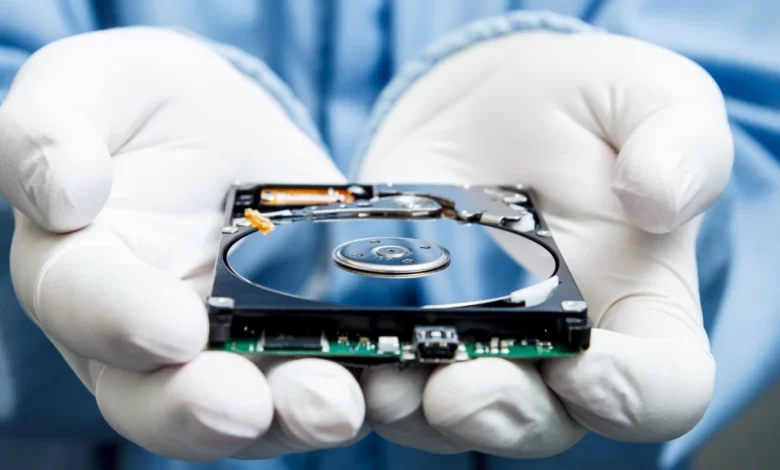
Navigating the Intricacies of Data Recovery Services
Losing valuable data can unfold into a nightmare, particularly without a solid recovery plan in place. With the technologically advanced solutions from ASAP Data Recovery, reinstating access to your indispensable files has never been more efficient and reliable. Understanding the basics of data recovery services can equip you with the knowledge to safeguard your digital assets and navigate through any unforeseen data mishaps effectively.
Defining Data Recovery Services
The Essence of Data Recovery
In the entwined sphere of the digital and tangible, data recovery emerges as a savior amidst potential chaos. It’s an encompassing solution that delves into the retrieval of data from damaged, failed, corrupted, or inaccessible storage media. The significance of data recovery is emphatically underscored in today’s digital-centric world, where data forms the lifeblood of myriad operations, from intricate business processes to personal data management. It is not merely a service but a shield against the cascading effects of unexpected data loss, safeguarding continuity and integrity across various digital domains.
Types of Data Recovery
Navigating through the variegated landscape of data recovery services reveals a multitude, each uniquely tailored to specific storage media and data loss scenarios. Hard drive data recovery explores the mechanical and magnetic domain, salvaging data from physical damage or logical corruption. Flash drive recovery maneuvers through compact storage, often grappling with electronic issues and logical failures. SSD data recovery wades through complex algorithms and electronic configurations to retrieve lost bits. Each type, whether it’s RAID, memory card, or Apple Mac data recovery, demonstrates the diversity and specialization ingrained in data recovery services, highlighting the nuanced approach needed for each medium and scenario.
The Anatomy of Data Loss
Common Causes of Data Loss
Data loss, an unnerving eventuality in the digital world, can stem from a plethora of sources. Mechanical failure, a common culprit, involves physical damage or wear and tear of storage devices, inhibiting data access. Human error, including accidental deletions or improper handling of devices, also ranks highly among the reasons. Additionally, malicious software, like ransomware, can encrypt or erase data, while other software bugs and glitches might corrupt files, rendering them inaccessible. Furthermore, natural disasters such as floods, fires, and others can inflict irrevocable damage to data storage hardware, leading to data loss. Each cause presents its unique challenges and recovery pathways, underscoring the complexity intertwined with data retrieval.
Impact of Data Loss on Businesses
The repercussions of data loss within a business context cascade through various aspects of its operations and reputation. Financially, data loss can entail substantial costs related to recovery efforts, downtime, and potential regulatory fines. Operationally, loss of critical data can halt business processes, causing service disruptions that tarnish customer trust and loyalty. In a world where data security is paramount, losing customer data can additionally result in reputational damage that extends far beyond the immediate financial impact. It signals a breach of trust and reliability, compelling businesses to rebuild not only their data structures but also the fractured confidence of their clientele and partners. Consequently, the impact is multifaceted, permeating through every layer of business functionality and credibility.
Exploring Various Data Storage Devices
Mechanical vs. Solid State Storage
Navigating the data recovery spectrum necessitates understanding disparate storage technologies. Mechanical Hard Disk Drives (HDDs) often suffer from physical wear and damage, posing challenges related to moving parts like read/write heads. In contrast, Solid State Drives (SSDs) eliminate moving components, yet present complexities with intricate circuitry and encryption algorithms during recovery. Each presents a unique set of challenges and solutions in the data recovery realm, with HDDs often grappling with mechanical failures and SSDs confronting electronic and logical issues.
Memory Cards and Flash Drives
Memory cards and flash drives, compact yet potent data storage mediums, harbor their distinct recovery challenges. Memory cards, pivotal in mobile and camera data storage, might confront issues like corruption or physical damage. Meanwhile, flash drives can suffer from broken connectors or electronic failure. Both demand specialized recovery approaches, with the compact nature and varied formats necessitating nuanced techniques and expertise. Addressing recovery in these smaller devices hinges on understanding their specific technological attributes and common failure modes, ensuring data retrieval is effectively executed.
The Process Behind Data Recovery
Initial Assessment and Strategy Formulation
The genesis of data recovery is entrenched in meticulous assessment and astute strategy development. Specialists commence by evaluating the extent and nature of the data loss, scrutinizing the storage medium for physical damage or logical corruption. This initial probe enables the delineation of a bespoke recovery strategy, considering factors like data importance, device type, and damage severity. Consequently, this analytical approach not only demystifies the data loss but also crafts a roadmap, ensuring that recovery endeavors are precisely targeted and optimized for success.
Execution of the Data Recovery Plan
Execution delves into the practical aspect of data recovery, where the formulated plan is brought to fruition. Technicians utilize specialized tools and software to access the lost data, ensuring meticulous adherence to the strategy to prevent further damage or data loss. For physical issues, a cleanroom might be utilized to disassemble and work on the storage medium; for logical problems, software tools are employed to navigate through the digital labyrinths to retrieve the lost data. Here, expertise meets technology, crafting a bridge that facilitates the journey from loss to recovery, underpinning the vital resurgence of inaccessible data.
Final Words
In the digital age, data is paramount. Protecting it, and understanding how to recover it during unforeseen mishaps, is crucial. Empower your data management strategy with the refined expertise and adept solutions of ASAP Data Recovery Services, nestled at 21133 Victory Blvd #209, Canoga Park, CA 91303, United States. For immediate assistance and unparalleled services, connect with us at +13238432444, and safeguard your digital realm against unexpected adversities.

